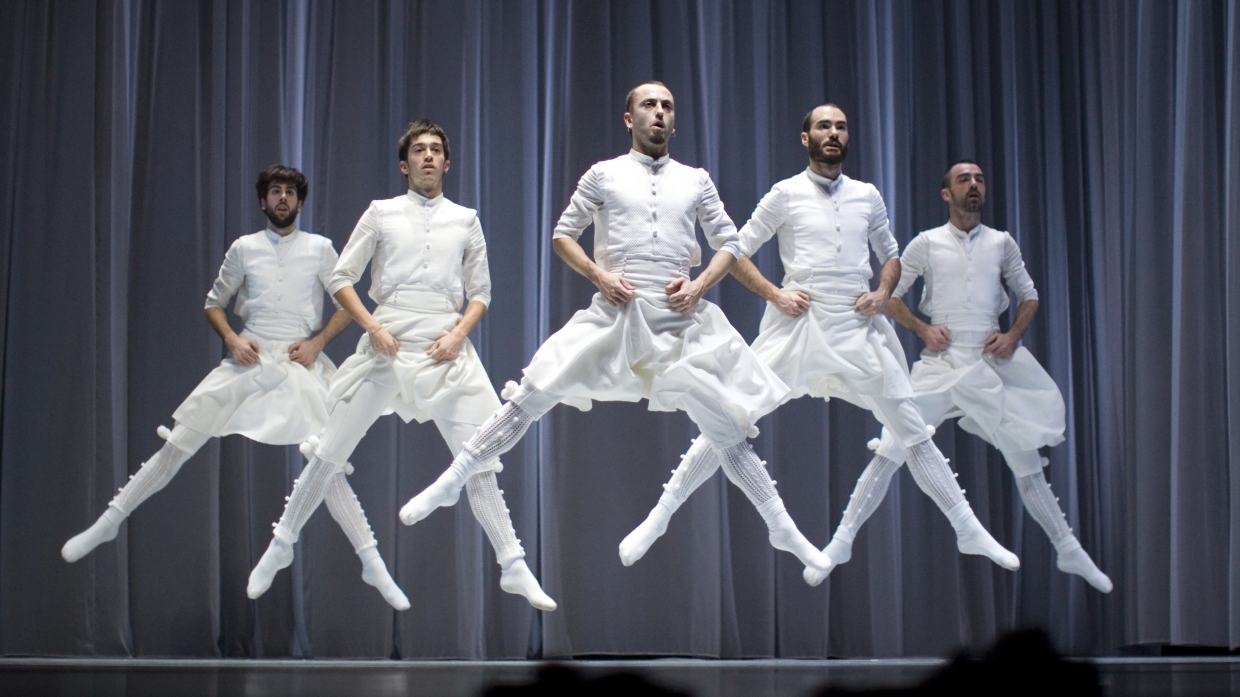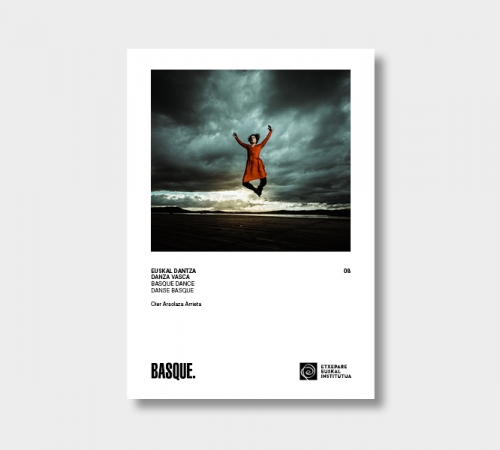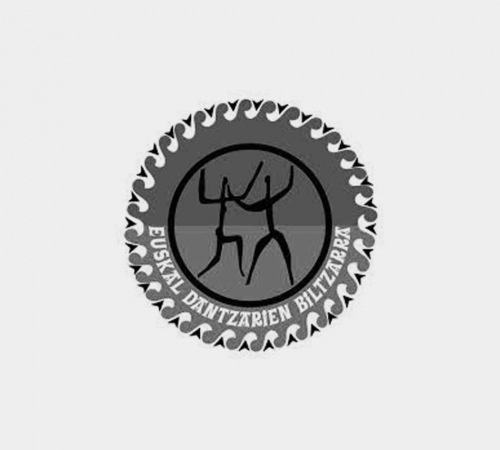Dance
Euskara. Kultura. Mundura.
 Dance
Dance The stones of the square resonate with the rhythm of footsteps, the sound of the txistu fill the air and the dancers’ movements weave together stories both old and new. This is Basque dance: an art expressed through the body, fusing the memory and creativity of a country. Passed down through generations over the centuries, it remains alive today – spanning from squares to theatres, from popular festivals to celebrations – continuously blending tradition and innovation.
A comprehensive artistic discipline
Basque dance is a comprehensive art form that conveys emotions, symbols, and the collective memory of the community through movement. Deeply rooted in every region of the Basque Country, dance has been passed down through generations and continues to evolve today, attracting new audiences and aiming for greater international recognition.
In its origins, Basque dance was closely linked to community life, performed in social and religious rites, festivals and celebrations as an expression of social cohesion and identity. Today, dance continues to serve its traditional role, but it has also gained its place on professional stages and specialised festivals, evolving fully as a performing art.
Diversity and choreographic richness
Basque dance brings together many forms and styles. Local customs and traditional musical instruments influence the structure of the movements and the choreographic elements. Among its most notable expressions are:
- The Zuberoa masquerades, a vibrant spectacle combining theatre and dance.
- The Lantz carnival, with its unique characters and striking visuals.
- Sword dances, such as those in Legazpi and Markina-Xemein.
- The stick-and-shield dances of Durangaldea.
- The aurresku, the main Basque dance of honour.
Basque dance is not merely a collection of isolated pieces; it is a cohesive, living repertoire where music, costumes, and rituals are seamlessly integrated with movement.
Innovation and rebirth in the twentieth century
In the first half of the twentieth century, Basque dance made the leap to the stage. Dance masters like Segundo Olaeta adapted traditional dances and turned them into shows. In 1937, Eresoinka, a group founded in exile, took Basque dance and music to over a dozen European countries, earning international recognition.
Later, the dance group Argia, led by Juan Antonio Urbeltz, became a benchmark by researching, recovering, and reinterpreting local dances, creating a unique synthesis of Basque dance showcased in performances like Zortziko.
Contemporary voices and new creations
In the twenty-first century, Basque dance has established itself as an artistic discipline thanks to the contribution of various companies and creators:
- Aukeran Dantza Konpainia (Edu Murumendiaraz) offer a combination of tradition and contemporary choreographic language.
- Kukai (Jon Maya) features contemporary creations inspired by folk dance, with a focus on interdisciplinary work.
- Ertza (Asier Zabaleta) merges social themes with physical storytelling.
- Idoia Zabaleta is a leading figure in choreographic experimentation and dialogue between disciplines.
- Jose and Concha Lainez introduced contemporary dance to the Basque Country in the 1970s with the groups Anexa and Yauskari.
- Mizel Theret, founder of the company Ekarle in the French Basque Country, blends tradition with contemporaneity.
These companies and choreographers have crossed borders, placing Basque dance on international stages and drawing in new audiences.
Basque dance today
Today, Basque dance is a vibrant, innovative art form – deeply rooted in tradition yet continuously evolving in its artistic expression. It remains present in squares and streets, at festivals and celebrations, but also within theatres and performing arts festivals, showcasing its professional development.
Because of its unique and diverse character, Basque dance is one of the key expressions of Basque culture: it brings together generations and keeps an open dialogue with the world.
Do you want to learn more about Basque dance? Download this book for free.
Related content
-

Basque dance
Do you want to know more about Basque dance? Download this book for free. (Basque - English). Basque - French and Basque - Spanish versions are available by browsing the website in Basque and in Spanish respectively.
-

Basqueculture.eus
Visit Basqueculture.eus and get inspired with articles and stories about our culture and society.
-

10 things to know about Basque culture
It’s not easy to condense the culture of a country into a brief brochure. This is an attempt to spark curiosity and encourage readers to learn more about the Basque language, culture and contemporary creation.
-

ADDE
ADDE works to promote dance, coordinate the sector, and improve the work conditions of dance professionals in the sector.
-

Euskal Dantzarien Biltzarra (EDB)
EDB is the Basque federation of Basque dancing associations.

